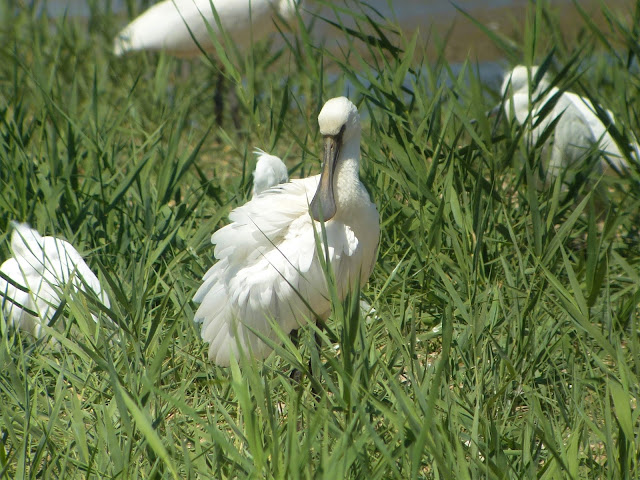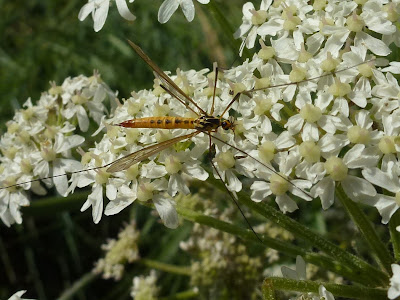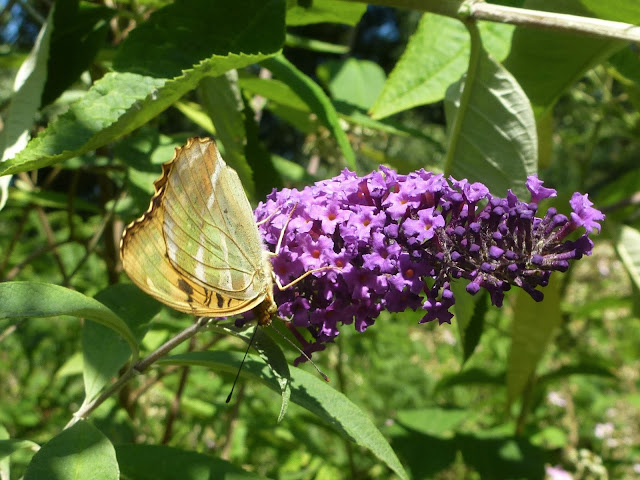Guest blog by Sarah Scott, Friends of Eaton Park
Walk arranged by Friends of Eaton Park, with Chris Durdin, Thursday 13 July 2023 6pm.
We were lucky
again with the weather: a few spits and spots of rain at the start, but clear
and dry for the rest of the walk. Twelve
of us set off from the Rotunda and first stop was the wildflower area between
the two model railway enclosures. This
area was originally planted with heathers, but they deteriorated some years ago
and the Friends of Eaton Park - in collaboration with the City Council -
replaced them with an area of seeded wildflowers. The beds were a riot of colour for our visit,
and we identified: Musk Mallow, Betony, Clary, Greater Knapweed, Ladies
Bedstraw (an exceptionally tall version), Wild Carrot and Restharrow. There was also some bright pink Broad-leaved Everlasting Pea, and Chris used one of the flowers to show us the characteristic structure
of pea flowers – the upper petal (the standard), two side petals (wings) and
two lower petals, fused together (the keel).Betony was in both its usual reddish-purple colour and several in this white form.
 |
| Broad-leaved everlasting pea. |
 |
| Restharrow: like several of the flowers in the first area, unusually tall. |
Time was
running out at this stage, so we headed straight to the main meadow (on the
North Park Avenue side of the park) pausing enroute to look at: Ivy-leaved
Toadflax, Procumbent Pearlwort, Knotgrass, Pineapple Mayweed, Plantains (Buckshorn
and Ribwort) and Burdock. Most of these were growing out of cracks in the
concrete next to the boating lake. We
also spotted a fern (Polypody) growing in the gutter of the old putting green hut!
 |
| Common polypody, in the gutter of the old putting green hut. |
The North
Park meadow is now well established and there was lots to see there: Lesser
Knapweed, Yellow Rattle (largely gone to seed with visible – rattly - seed
heads), Ladies Bedstraw (the usual, shorter version), Common Ragwort (complete with
Red Soldier Beetles, aka Hogweed Bonking Beetle!), Hedge Mustard and grasses
(Cocksfoot, Timothy, Yorkshire Fog), White Campion and Catsear.
We discussed
the maintenance of the meadow, which is cut just once a year and has clear
paths for public access. This year, in September, it will be cut by a party of
scythers (in conjunction with Norfolk Wildlife Trust) and – as in previous
years – an area will be left overwinter as a ‘refuge’ for insects.
The
grasshoppers were very active during our visit but, sadly, we didn’t spot any
wasp spiders on this occasion – maybe later in the summer. Despite not finding
the spiders we finished up with a fascinating discussion about the
‘stabilimentum’ which is a wide, white, zig-zag strip running down the centre
of the web. There are various suggestions as to its purpose – attracting a
mate? Attracting prey? Visible at night? But the jury is still out on this
one. The wonders of nature!
Thank you,
Chris, for another entertaining and informative ramble.
Sarah Scott
 |
| Group members around an area sown with wild flowers. |












